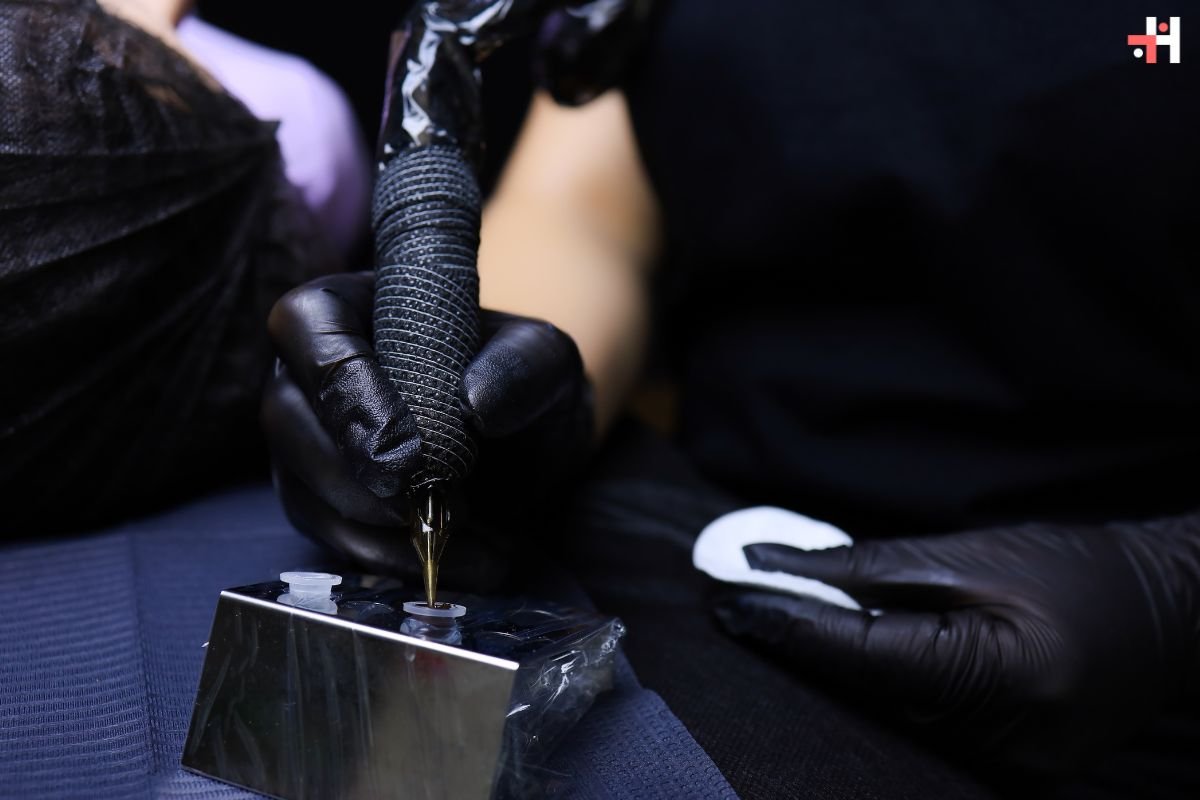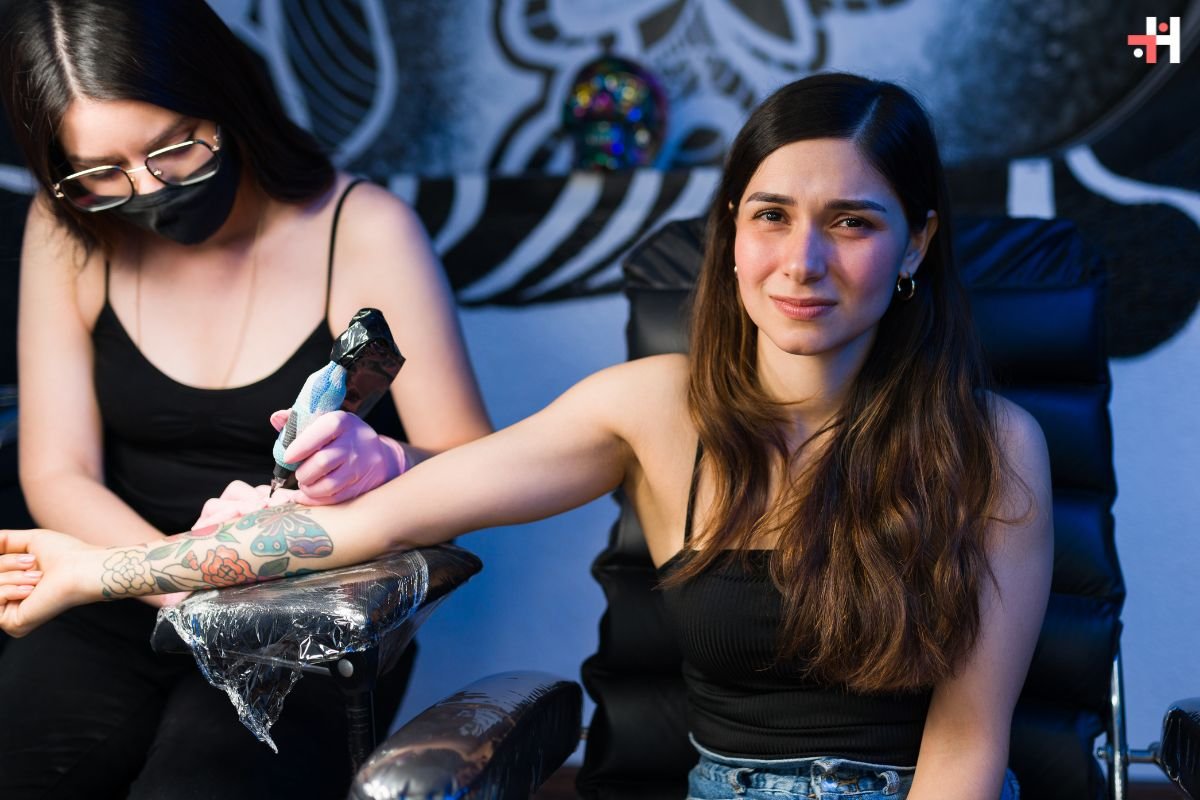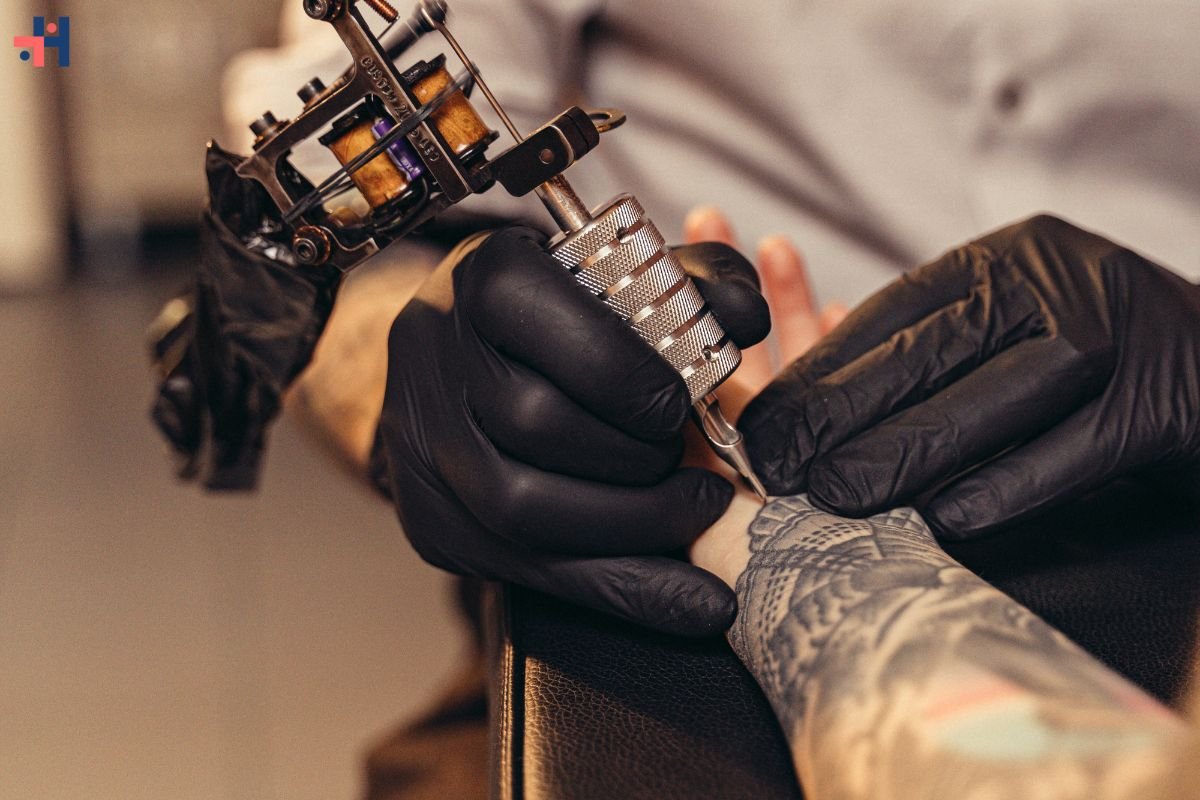Tattoos have emerged as a popular form of body art, allowing individuals to express their creativity and individuality. However, along with the aesthetic appeal of tattoos, there are also potential risks, including the risk of infection. In this extensive guide, we’ll delve into the topic of tattoos and infections, covering everything from their causes and symptoms to treatment and prevention strategies, ensuring that you have the knowledge to enjoy your tattoo safely.
Understanding Tattoos and Infections:
Tattoo infections occur when bacteria or other pathogens enter the skin during the tattooing process or in the days following the procedure. Several factors can contribute to the development of an infection, including:

- Poor Hygiene Practices: Tattoos and infections can result from inadequate sterilization of equipment, including needles, ink, and tattooing instruments. Reusing needles or using unsterilized equipment can introduce bacteria into the skin, leading to infections.
- Contaminated Ink or Water: The quality of tattoo ink and water used during the tattooing process is crucial. Contaminated ink or water can harbor bacteria or other microorganisms, increasing the risk of infection.
- Improper Aftercare: Failure to follow proper aftercare instructions can also increase the likelihood of developing a tattoo infection. Neglecting to keep the tattoo site clean and dry during the healing process can create an environment conducive to bacterial growth.
- Underlying Health Conditions: Individuals with pre-existing skin conditions or compromised immune systems may be more susceptible to tattoos and infections. Conditions such as diabetes, HIV/AIDS, or autoimmune disorders can impair the body’s ability to fight off infections, making tattoo-related complications more likely.
Identifying Symptoms of Tattoos and Infections:
Recognizing the early signs of a tattoo infection is crucial for prompt treatment and preventing complications. Some common symptoms to watch out for include:
- Redness, Swelling, or Warmth: Infections may cause localized inflammation, resulting in redness, swelling, or increased warmth around the tattoo site.
- Pain or Tenderness: Infected tattoos may be tender to the touch and may cause pain or discomfort, particularly as the infection progresses.
- Pus or Discharge: Pus or fluid may accumulate at the tattoo site, accompanied by a foul odor. Discharge from the tattoo may indicate an underlying infection.

- Fever or Chills: Systemic symptoms such as fever, chills, or malaise may develop in severe cases of tattoo infection, indicating that the infection has spread beyond the tattoo site.
Treatment Options for Tattoos and Infections:
If you suspect that you have a tattoo infection, it’s essential to seek medical attention promptly. Depending on the severity of the infection, your healthcare provider may recommend the following treatments:
- Antibiotics: Oral or topical antibiotics may be prescribed to combat bacterial infections and prevent further spread.
- Wound Cleaning: Cleaning the infected tattoo site with mild soap and water can help remove debris and bacteria, promoting healing.
- Drainage: If there’s a buildup of pus or fluid at the tattoo site, your doctor may need to drain the area to alleviate pressure and facilitate healing.
- Pain Management: Over-the-counter pain relievers such as acetaminophen or ibuprofen can help alleviate discomfort associated with the infection.
- Follow-Up Care: It’s essential to follow any instructions provided by your healthcare provider for ongoing wound care and monitoring of the infection’s progress.
Preventive Measures to Avoid Tattoos and Infections:
While it’s impossible to eliminate the risk of tattoo infections entirely, there are several steps you can take to reduce your chances of experiencing complications:
- Choose a Reputable Tattoo Artist: Research tattoo parlors thoroughly and select an artist with a reputation for adhering to strict hygiene standards. Verify that the tattoo artist is licensed and follows proper sterilization protocols.

- Ensure Sterilization of Equipment: Before getting a tattoo, ensure that all equipment, including needles, ink caps, and tattooing instruments, is properly sterilized and disposable. Disposable needles and single-use ink cartridges can help minimize the risk of contamination.
- Follow Aftercare Instructions: Carefully follow the aftercare instructions provided by your tattoo artist to promote healing and reduce the risk of infection. Keep the tattoo site clean and dry, avoid picking or scratching at the tattoo, and apply recommended ointments or moisturizers as directed.
- Monitor for Signs of Infection: Keep a close eye on the tattoo site during the healing process and watch for any signs of infection, such as redness, swelling, or discharge. If you notice any concerning symptoms, seek medical attention promptly to prevent complications.
- Avoid Swimming and Sun Exposure: Refrain from swimming in pools, hot tubs, or natural bodies of water until the tattoo has fully healed to avoid exposing the tattoo site to bacteria. Additionally, protect your tattoo from direct sunlight and UV exposure during the healing process to prevent fading and irritation.
Conclusion:
Tattoos are a popular form of self-expression and artistry, but they also come with potential risks, including the risk of infection. By understanding the causes, symptoms, treatment options, and preventive measures for tattoos and infections, you can minimize your risk and ensure a safe and enjoyable tattoo experience. Remember to prioritize hygiene, choose a reputable tattoo artist, and closely monitor your tattoo site for any signs of infection to promote healing and avoid complications. With proper care and attention, you can proudly display your tattoo as a symbol of self-expression and creativity for years to come.









